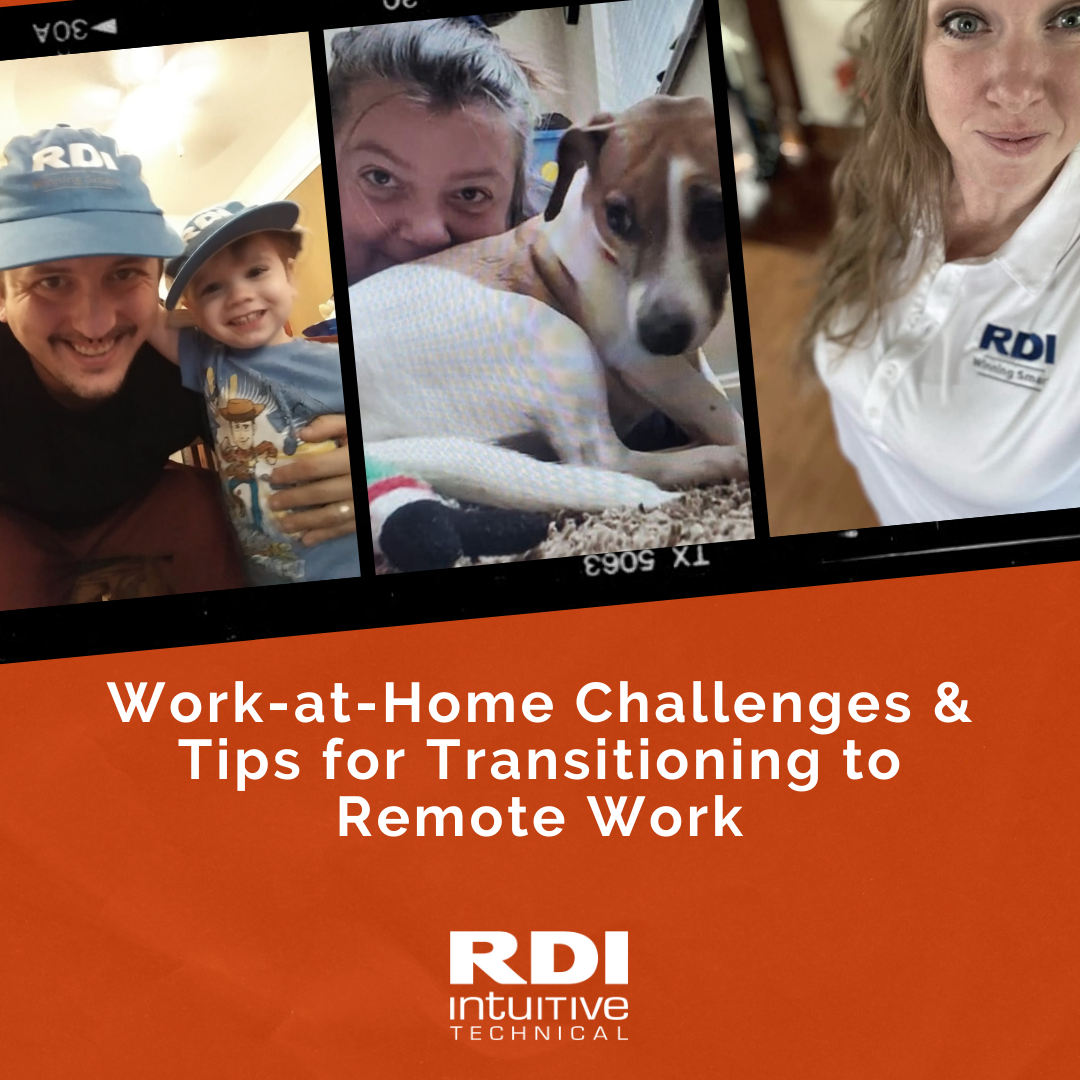“Work-at-home”, “telecommuting”, “remote work”, “e-work” are all common phrases in the spotlight since the COVID-19 outbreak. While much information is still fresh, our COVID tracker market research has found at least 49% of workers in the United States have transitioned to telecommute or work from home status since the outbreak.
Like many of you, RDI teams have made the WAH transition too, as well as accommodating client needs while adjusting to remote work and non-9-to-5 hours.
Most companies have embraced the change to remote work without issue and employers are pleasantly surprised with the positive response and productivity of a remote staff transition. However, surveys show significant employee concerns with a work-at-home strategy due to a lack of resources such as computers and broadband, lack of time and commitment with families at home, as well as, feelings of isolation, and blurred lines between personal & professional life.
What are some of the challenges in transitioning to work-at-home?
Technology Hiccups
While at-home concerns are primarily connectivity issues, technology issues arise in regards to ensuring security and consistent internet and phone connections. IT support departments are problem-solving and assisting employees with efficient at-home work strategies. Additionally, balances are to be considered such as work web use with the household on-line gaming and video chatting at the same time.
Back-up Plans
One of the most common needs we hear of is inconsistent connectivity at home when adding additional systems or use, as well as, video conferencing needs. A common initial resolution is the use of a mobile hotspot should your internet connectivity stop. Consider additional plans and options to ensure connectivity and workloads are maintained.
Remote Interruptions & Distractions
Animals, doorbells, and relatives, are all distractions we have seen and heard about during work-at-home time. Solutions can include scheduling your work time outside of known distractions in addition to separation in your own workspace during work hours. Experts state structure at home is a key to balancing work and household priorities.
Health Concerns
Work-at-home models change our structure, routine, and thoughts; separation of work and home/family needs becomes clouded and unclear at times. We tend to compensate when this happens – we change our eating habits and workout habits, get to the gym less and walk less affecting how we feel and interact. Experts recommend staying organized; when you’re working in the same space you live in it can be easy to get priorities jumbled.
What are some tips to assist greatly in transitioning to remote work?
Collaboration
Many of us are used to working in teams with social interactions in our office environment; working remotely is a change to this traditional model. Continued communication and connections are important to maintaining productivity for the entity, as well as, our personal well-being.
Instant messaging, text messages for work, and social updates are being encouraged to assist in normalcy in employee interactions and production.
Additional sense of teamwork has been maintained by creative solutions such as “telecommuting as you awoke” allowing for morning hair and PJ’s in focus on team video update calls.
Added items such as flex hours assist in accommodating spouses and children at home have proven helpful to staff feeling balanced.
Managing Your Time
While ensuring productivity, you want to maintain breaks between home and work. Techniques include remembering to take regular breaks and switching off “work mode” after hours. We have heard of employees not being on key due to changes in schedules and priority items such as workout routines; managing your time is key to balancing time between home and work needs.
Remote Social Interacting
Maintain regular social interactions with work staff and teams are a key to maintaining productivity in work-at-home settings. While team interactions on projects is important to accomplishing goals, finding the balance for “water cooler” discussions remotely are key to success as being in-person and in-office project work and focus.
Transition and Change
We have seen the lighter side of work at home transitions illustrated in media recently including animals intruding in video sessions, dogs barking, and interviewer camera’s falling to the floor during a live National session. Transition and change can be stressful especially when it affects family and friends. Try and take a deep breath during this time of transition and remember you are not in this alone – we all will get through this together. I have to go now – my dogs are barking…….
#Healthcare
Chuck Hutchings
Director of Healthcare Operations & Strategy
To learn more about RDI Intuitive Technical, contact us!
To join our team, apply at http://workRDI.com
